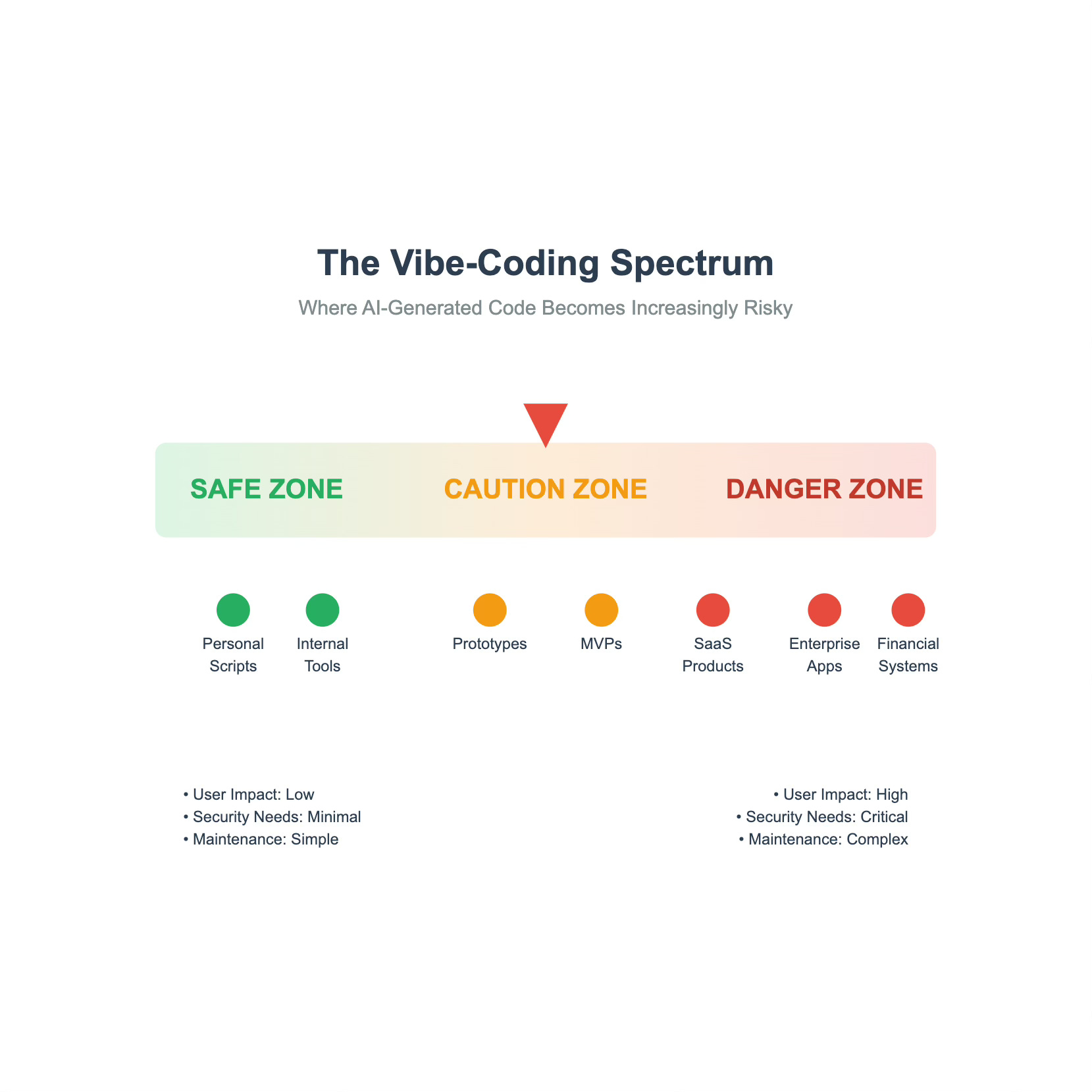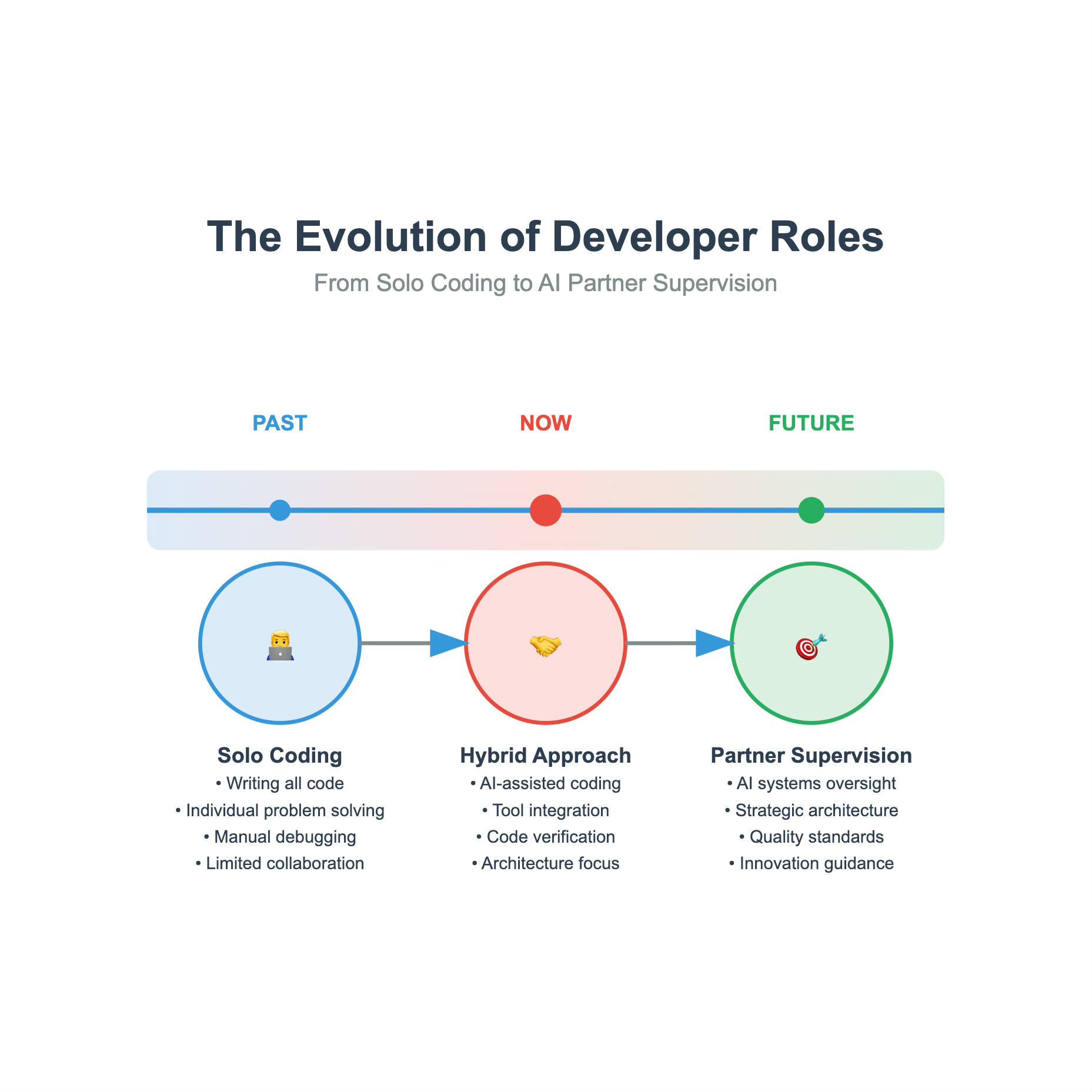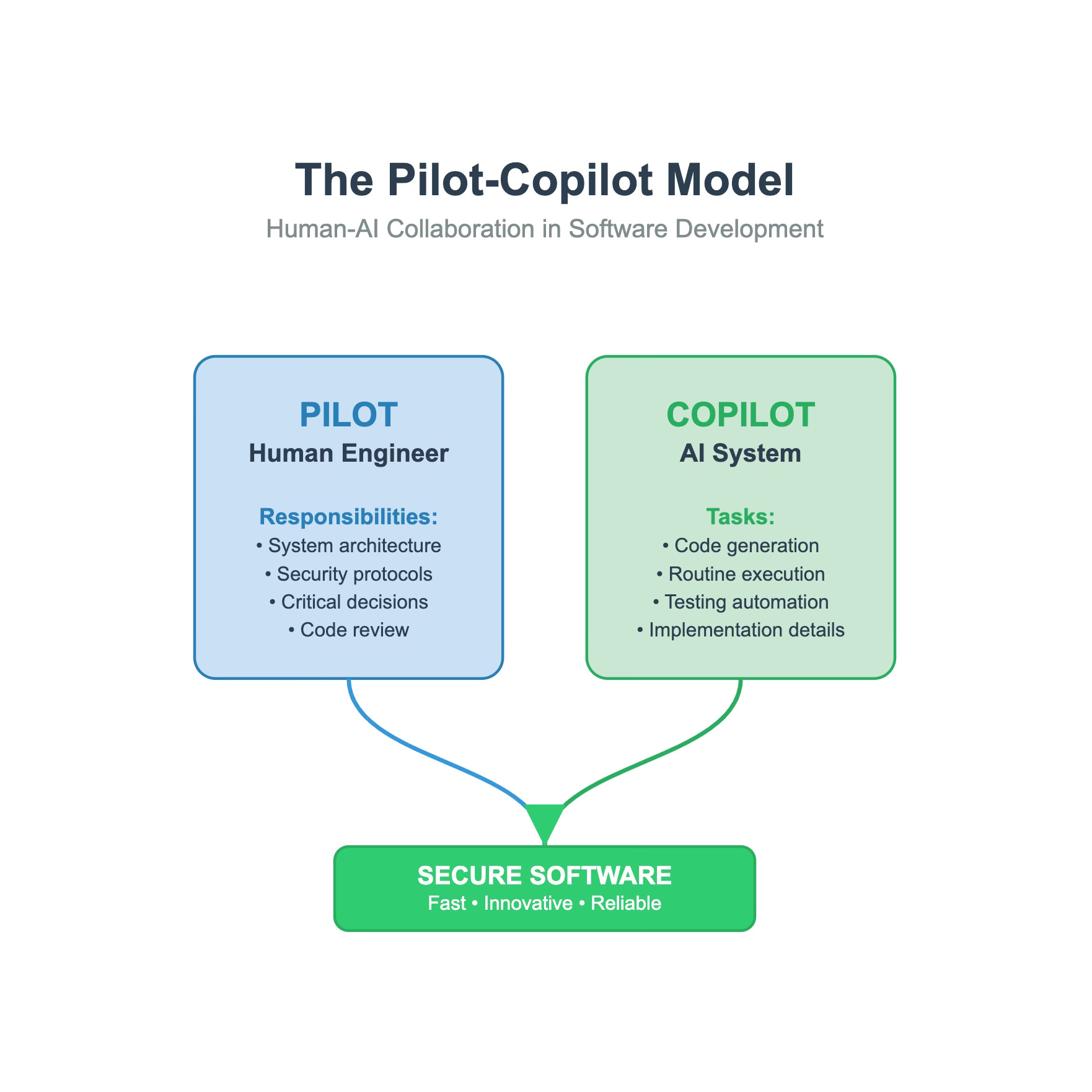"It Works" Isn't Enough for Commercial Software
Vibe-coding excels for personal projects but creates dangerous technical debt in commercial products that require human-designed architecture and oversight
Last month, a startup founder proudly showed me his new SaaS application.
"I built this entire platform without writing a single line of code myself. Just described what I wanted to the AI, and it generated everything."
The app looked polished on the surface — sleek interface, seemingly functional features. But within minutes of testing, I encountered three critical security vulnerabilities that would have exposed customer data.
This wasn't an isolated incident; it represents a growing trend we call vibe-coding.
What Is Vibe-Coding?
Vibe-coding refers to the practice of creating software primarily through AI tools, where you describe the desired functionality and the AI generates the code with minimal human oversight or understanding of the underlying implementation.
Think of it as building a house from verbal descriptions alone — no blueprints, no inspections. The structure might look impressive but hide serious structural flaws that emerge later.
The Vibe-Coding Confession
I don't believe in vibe-coding — at least not when you're creating an app to sell to clients or users. As a customer, I'd rather do work manually than use commercially vibe-coded software.
With experience building AI-assisted software, I'm convinced any purely vibe-coded app harbors countless bugs.
While minor issues might be tolerable, some bugs can become serious security vulnerabilities. I'm not paranoid about personal data, but I practice basic cyber hygiene. And fully vibe-coded apps appear inherently problematic from the start.
The Place for Vibe-Coding
Don't misunderstand: I'm not against vibe-coding as an assistive tool. I use it daily. Think of it as the difference between:
Making vibe-coding safe requires thoughtful architecture design and verification of AI-generated changes — similar to how senior developers review code from junior developers.
A Real-World Example
Recently, I consulted with someone who vibe-coded an app with the intention of selling it. They wisely sought a review before proceeding.
The app appeared to function adequately at first glance — it processed user inputs and displayed results. But a deeper examination revealed several critical issues:
Input validation was nonexistent. The application accepted any input format without validation, creating potential injection vulnerabilities
Performance degraded rapidly. Loading times increased exponentially with data volume, making it unusable with real-world data sets
Documentation was missing entirely. No comments, no architecture diagrams, no deployment instructions
Error handling was primitive. The app crashed instead of gracefully managing exceptions
Most importantly, the app wasn't something with substantial selling value. It worked well as a lead magnet or free tool, but wasn't robust enough to be a commercial product.
The Disconnect: Functional vs. Maintainable
The AI-built application mentioned earlier illustrates a critical difference: code that functions versus code that's maintainable. When vibe-coding, you often get solutions that execute the task but:
Use unpredictable or inefficient algorithms
Implement dangerous security shortcuts
Create difficult-to-read code
Lack proper documentation
Fall short on performance optimization
For personal tools, these limitations might be acceptable — like using duct tape for a quick home repair. For commercial software, they're dealbreakers — just as you wouldn't want a professional plumber using duct tape for repairs in your home.
The Freedom and Limitations
Vibe-coding is a powerful complementary skill for non-technical people. It enables building tools for personal use or internal business applications. It liberates people from traditional development constraints.
However, for commercial software products sold to clients or users, vibe-coding falls short. It rarely passes basic quality assurance:
The code isn't maintainable long-term
AI often employs unusual algorithms
Security vulnerabilities are common
Performance optimization is overlooked
Documentation: The Critical Missing Link
Perhaps the most serious failing in vibe-coded applications is documentation. AI-generated code is notoriously cryptic — often using non-standard approaches and unclear naming conventions that make the code itself difficult to decipher.
"Code tells you how; documentation tells you why."
Without proper documentation, you create a ticking time bomb:
Even you will forget how your own system works within weeks. That clever AI-generated authentication system? Good luck remembering how to modify it when your business needs change.
Configuration changes become perilous. Need to update API endpoints or business rules? Without documentation, you'll likely break something trying to make what should be simple changes.
Other developers are effectively locked out. No one can safely modify code they don't understand, turning your application into a fragile black box that can't evolve.
Deployment becomes a mystery ritual rather than a repeatable process. Without documentation on environment setup, dependencies, and configuration, moving to new servers or cloud environments becomes unnecessarily risky.
This documentation gap creates a dangerous dependency on the original creator who themselves will struggle to remember the implementation details as time passes. It's like building a maze with no map; eventually, everyone gets lost, including the builder.
The Future Role of Software Engineers
Despite these challenges, I'm not concerned about AI replacing software engineering positions. The quality of AI-generated code confirms that human expertise remains essential.
This doesn't mean software engineers can be complacent. The role is evolving from just writing code to:
Designing robust software architecture
Creating systems AI can effectively implement
Verifying and optimizing AI-generated solutions
Ensuring security and maintainability standards
Finding the Balance: A Hybrid Approach
The most effective strategy resembles a pilot-copilot relationship:
Human architects design the overall structure, security protocols, and performance requirements
AI assistance generates implementation details and routine code
Human review verifies the generated code meets standards
Automated testing validates functionality and security
This approach combines human creativity and oversight with AI efficiency and consistency.
Looking Ahead: The Evolution of Vibe-Coding
As AI tools improve, the boundaries between vibe-coding and commercial development will blur. Future AI may address many current limitations, particularly around security and performance optimization.
However, I believe the fundamental principle will remain: technology that impacts others requires human oversight and responsibility.
Questions to Ask About AI-Generated Code
If you're using AI to generate code, ask yourself:
Can someone else maintain this without me?
Has it been tested with unexpected inputs?
And most importantly, would I trust my own sensitive data to this system?





